Community
A community is a social unit (a group of living things) with commonality such as norms, religion, values, customs, or identity. Communities may share a sense of place situated in a given geographical area (e.g. a country, village, town, or neighbourhood) or in virtual space through communication platforms. Durable relations that extend beyond immediate genealogical ties also define a sense of community, important to their identity, practice, and roles in social institutions such as family, home, work, government, society, or humanity at large.[1][2] Although communities are usually small relative to personal social ties, "community" may also refer to large group affiliations such as national communities, international communities, and virtual communities.[3]
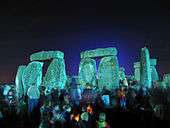
| Part of a series on |
| Community |
|---|
| Academic studies |
| Key concepts |
|
| Community development |
| See also |
|
The English-language word "community" derives from the Old French comuneté (currently "Communauté"), which comes from the Latin communitas "community", "public spirit" (from Latin communis, "common").[4]
Human communities may share intent, belief, resources, preferences, needs, and risks in common, affecting the identity of the participants and their degree of cohesiveness.[5]
Perspectives of various disciplines
Archaeology
Archaeological studies of social communities use the term "community" in two ways, paralleling usage in other areas. The first is an informal definition of community as a place where people used to live. In this sense it is synonymous with the concept of an ancient settlement - whether a hamlet, village, town, or city. The second meaning resembles the usage of the term in other social sciences: a community is a group of people living near one another who interact socially. Social interaction on a small scale can be difficult to identify with archaeological data. Most reconstructions of social communities by archaeologists rely on the principle that social interaction in the past was conditioned by physical distance. Therefore, a small village settlement likely constituted a social community and spatial subdivisions of cities and other large settlements may have formed communities. Archaeologists typically use similarities in material culture—from house types to styles of pottery—to reconstruct communities in the past. This classification method relies on the assumption that people or households will share more similarities in the types and styles of their material goods with other members of a social community than they will with outsiders.[6]
Ecology
In ecology, a community is an assemblage of populations of different species, interacting with one another. Community ecology is the branch of ecology that studies interactions between and among species. It considers how such interactions, along with interactions between species and the abiotic environment, affect community structure and species richness, diversity and patterns of abundance. Species interact in three ways: competition, predation and mutualism. Competition typically results in a double negative—that is both species lose in the interaction. Predation is a win/lose situation with one species winning. Mutualism, on the other hand, involves both species cooperating in some way, with both winning. The two main types of communities are major which are self-sustaining and self-regulating (such as a forest or a lake) and minor communities which rely on other communities (like fungi decomposing a log) and are the building blocks of major communities.
.svg.png)
Key concepts
Gemeinschaft and Gesellschaft
In Gemeinschaft und Gesellschaft (1887), German sociologist Ferdinand Tönnies described two types of human association: Gemeinschaft (usually translated as "community") and Gesellschaft ("society" or "association"). Tönnies proposed the Gemeinschaft–Gesellschaft dichotomy as a way to think about social ties. No group is exclusively one or the other. Gemeinschaft stress personal social interactions, and the roles, values, and beliefs based on such interactions. Gesellschaft stress indirect interactions, impersonal roles, formal values, and beliefs based on such interactions.[7]
Sense of community
In a seminal 1986 study, McMillan and Chavis[8] identify four elements of "sense of community":
- membership: feeling of belonging or of sharing a sense of personal relatedness,
- influence: mattering, making a difference to a group and of the group mattering to its members
- reinforcement: integration and fulfillment of needs,
- shared emotional connection.
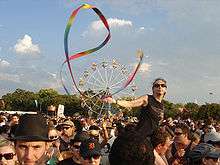
A "sense of community index (SCI) was developed by Chavis and colleagues, and revised and adapted by others. Although originally designed to assess sense of community in neighborhoods, the index has been adapted for use in schools, the workplace, and a variety of types of communities.[9]
Studies conducted by the APPA indicate that young adults who feel a sense of belonging in a community, particularly small communities, develop fewer psychiatric and depressive disorders than those who do not have the feeling of love and belonging.
Socialization
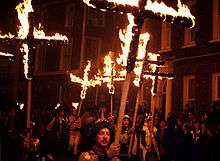
The process of learning to adopt the behavior patterns of the community is called socialization. The most fertile time of socialization is usually the early stages of life, during which individuals develop the skills and knowledge and learn the roles necessary to function within their culture and social environment.[10] For some psychologists, especially those in the psychodynamic tradition, the most important period of socialization is between the ages of one and ten. But socialization also includes adults moving into a significantly different environment where they must learn a new set of behaviors.[11]
Socialization is influenced primarily by the family, through which children first learn community norms. Other important influences include schools, peer groups, people, mass media, the workplace, and government. The degree to which the norms of a particular society or community are adopted determines one's willingness to engage with others. The norms of tolerance, reciprocity, and trust are important "habits of the heart," as de Tocqueville put it, in an individual's involvement in community.[12]
Community development
Community development is often linked with community work or community planning, and may involve stakeholders, foundations, governments, or contracted entities including non-government organisations (NGOs), universities or government agencies to progress the social well-being of local, regional and, sometimes, national communities. More grassroots efforts, called community building or community organizing, seek to empower individuals and groups of people by providing them with the skills they need to effect change in their own communities.[13] These skills often assist in building political power through the formation of large social groups working for a common agenda. Community development practitioners must understand both how to work with individuals and how to affect communities' positions within the context of larger social institutions. Public administrators, in contrast, need to understand community development in the context of rural and urban development, housing and economic development, and community, organizational and business development.
Formal accredited programs conducted by universities, as part of degree granting institutions, are often used to build a knowledge base to drive curricula in public administration, sociology and community studies. The General Social Survey from the National Opinion Research Center at the University of Chicago and the Saguaro Seminar at the John F. Kennedy School of Government at Harvard University are examples of national community development in the United States. The Maxwell School of Citizenship and Public Affairs at Syracuse University in New York State offers core courses in community and economic development, and in areas ranging from non-profit development to US budgeting (federal to local, community funds). In the United Kingdom, the University of Oxford has led in providing extensive research in the field through its Community Development Journal,[14] used worldwide by sociologists and community development practitioners.
At the intersection between community development and community building are a number of programs and organizations with community development tools. One example of this is the program of the Asset Based Community Development Institute of Northwestern University. The institute makes available downloadable tools[15] to assess community assets and make connections between non-profit groups and other organizations that can help in community building. The Institute focuses on helping communities develop by "mobilizing neighborhood assets" – building from the inside out rather than the outside in.[16] In the disability field, community building was prevalent in the 1980s and 1990s with roots in John McKnight's approaches.[17][18]
Community building and organizing
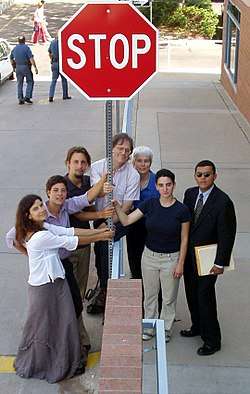
In The Different Drum: Community-Making and Peace (1987) Scott Peck argues that the almost accidental sense of community that exists at times of crisis can be consciously built. Peck believes that conscious community building is a process of deliberate design based on the knowledge and application of certain rules.[19] He states that this process goes through four stages:[20]
- Pseudocommunity: When people first come together, they try to be "nice" and present what they feel are their most personable and friendly characteristics.
- Chaos: People move beyond the inauthenticity of pseudo-community and feel safe enough to present their "shadow" selves.
- Emptiness: Moves beyond the attempts to fix, heal and convert of the chaos stage, when all people become capable of acknowledging their own woundedness and brokenness, common to human beings.
- True community: Deep respect and true listening for the needs of the other people in this community.
In 1991, Peck remarked that building a sense of community is easy but maintaining this sense of community is difficult in the modern world.[21]
The three basic types of community organizing are grassroots organizing, coalition building, and "institution-based community organizing," (also called "broad-based community organizing," an example of which is faith-based community organizing, or Congregation-based Community Organizing).[22]
Community building can use a wide variety of practices, ranging from simple events (e.g., potlucks, small book clubs) to larger-scale efforts (e.g., mass festivals, construction projects that involve local participants rather than outside contractors).
Community building that is geared toward citizen action is usually termed "community organizing."[23] In these cases, organized community groups seek accountability from elected officials and increased direct representation within decision-making bodies. Where good-faith negotiations fail, these constituency-led organizations seek to pressure the decision-makers through a variety of means, including picketing, boycotting, sit-ins, petitioning, and electoral politics.
Community organizing can focus on more than just resolving specific issues. Organizing often means building a widely accessible power structure, often with the end goal of distributing power equally throughout the community. Community organizers generally seek to build groups that are open and democratic in governance. Such groups facilitate and encourage consensus decision-making with a focus on the general health of the community rather than a specific interest group.
If communities are developed based on something they share in common, whether location or values, then one challenge for developing communities is how to incorporate individuality and differences. Rebekah Nathan suggests in her book, My Freshman Year, we are drawn to developing communities totally based on sameness, despite stated commitments to diversity, such as those found on university websites.
Types of community
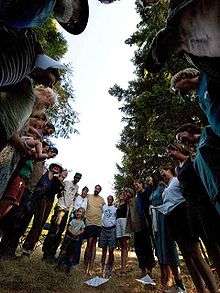
A number of ways to categorize types of community have been proposed. One such breakdown is as follows:
- Location-based Communities: range from the local neighbourhood, suburb, village, town or city, region, nation or even the planet as a whole. These are also called communities of place.
- Identity-based Communities: range from the local clique, sub-culture, ethnic group, religious, multicultural or pluralistic civilisation, or the global community cultures of today. They may be included as communities of need or identity, such as disabled persons, or frail aged people.
- Organizationally based Communities: range from communities organized informally around family or network-based guilds and associations to more formal incorporated associations, political decision making structures, economic enterprises, or professional associations at a small, national or international scale.
The usual categorizations of community relations have a number of problems:[24] (1) they tend to give the impression that a particular community can be defined as just this kind or another; (2) they tend to conflate modern and customary community relations; (3) they tend to take sociological categories such as ethnicity or race as given, forgetting that different ethnically defined persons live in different kinds of communities —grounded, interest-based, diasporic, etc.[25]
In response to these problems, Paul James and his colleagues have developed a taxonomy that maps community relations, and recognizes that actual communities can be characterized by different kinds of relations at the same time:[26]
- Grounded community relations. This involves enduring attachment to particular places and particular people. It is the dominant form taken by customary and tribal communities. In these kinds of communities, the land is fundamental to identity.
- Life-style community relations. This involves giving primacy to communities coming together around particular chosen ways of life, such as morally charged or interest-based relations or just living or working in the same location. Hence the following sub-forms:
- community-life as morally bounded, a form taken by many traditional faith-based communities.
- community-life as interest-based, including sporting, leisure-based and business communities which come together for regular moments of engagement.
- community-life as proximately-related, where neighbourhood or commonality of association forms a community of convenience, or a community of place (see below).
- Projected community relations. This is where a community is self-consciously treated as an entity to be projected and re-created. It can be projected as through thin advertising slogan, for example gated community, or can take the form of ongoing associations of people who seek political integration, communities of practice[27] based on professional projects, associative communities which seek to enhance and support individual creativity, autonomy and mutuality. A nation is one of the largest forms of projected or imagined community.
In these terms, communities can be nested and/or intersecting; one community can contain another—for example a location-based community may contain a number of ethnic communities.[28] Both lists above can used in a cross-cutting matrix in relation to each other.
Internet communities
In general, virtual communities value knowledge and information as currency or social resource.[29][30][31][32] What differentiates virtual communities from their physical counterparts is the extent and impact of "weak ties," which are the relationships acquaintances or strangers form to acquire information through online networks.[33] Relationships among members in a virtual community tend to focus on information exchange about specific topics.[34][35] A survey conducted by Pew Internet and The American Life Project in 2001 found those involved in entertainment, professional, and sports virtual groups focused their activities on obtaining information.[36]
An epidemic of bullying and harassment has arisen from the exchange of information between strangers, especially among teenagers,[37] in virtual communities. Despite attempts to implement anti-bullying policies, Sheri Bauman, professor of counselling at the University of Arizona, claims the "most effective strategies to prevent bullying" may cost companies revenue.[38]
See also
Notes
- "Community : The Blackwell Encyclopedia of Sociology : Blackwell Encyclopedia of SociolOnline". www.sociologyencyclopedia.com. Retrieved 2016-07-01.
- James, Paul; Nadarajah, Yaso; Haive, Karen; Stead, Victoria (2012). Sustainable Communities, Sustainable Development: Other Paths for Papua New Guinea. Honolulu: University of Hawaii Press. p. 14.
[...] we define community very broadly as a group or network of persons who are connected (objectively) to each other by relatively durable social relations that extend beyond immediate genealogical ties and who mutually define that relationship (subjectively) as important to their social identity and social practice.
- See also: James, Paul (2006). Globalism, Nationalism, Tribalism: Bringing Theory Back In – Volume 2 of Towards a Theory of Abstract Community. London: Sage Publications.
- "community" Oxford Dictionaries. 2014. Oxford Dictionaries
- Melih, Bulu (2011-10-31). City Competitiveness and Improving Urban Subsystems: Technologies and Applications: Technologies and Applications. IGI Global. ISBN 978-1-61350-175-7.
- Canuto, Marcello A. and Jason Yaeger (editors) (2000) The Archaeology of Communities. Routledge, New York. Hegmon, Michelle (2002) Concepts of Community in Archaeological Research. In Seeking the Center: Archaeology and Ancient Communities in the Mesa Verde Region, edited by Mark D. Varien and Richard H. Wilshusen, pp. 263–79. University of Utah Press, Salt Lake City.
- Tönnies, Ferdinand (1887). Gemeinschaft und Gesellschaft, Leipzig: Fues's Verlag. An English translation of the 8th edition 1935 by Charles P. Loomis appeared in 1940 as Fundamental Concepts of Sociology (Gemeinschaft und Gesellschaft), New York: American Book Co.; in 1955 as Community and Association (Gemeinschaft und gesellschaft[sic]), London: Routledge & Kegan Paul; and in 1957 as Community and Society, East Lansing: Michigan State U.P. Loomis includes as an Introduction, representing Tönnies' "most recent thinking", his 1931 article "Gemeinschaft und Gesellschaft" in Handwörterbuch der Soziologie (Stuttgart, Enke V.).
- McMillan, D.W., & Chavis, D.M. 1986. "Sense of community: A definition and theory," p. 16.
- Perkins, D.D., Florin, P., Rich, R.C., Wandersman, A. & Chavis, D.M. (1990). Participation and the social and physical environment of residential blocks: Crime and community context. American Journal of Community Psychology, 18, 83–115. Chipuer, H.M., & Pretty, G.M.H. (1999). A review of the Sense of Community Index: Current uses, factor structure, reliability, and further development. Journal of Community Psychology, 27(6), 643–58. Long, D.A., & Perkins, D.D. (2003). Confirmatory Factor Analysis of the Sense of Community Index and Development of a Brief SCI. Journal of Community Psychology, 31, 279–96.
- Newman, D. 2005. Chapter 5. "Building Identity: Socialization" pp. 134–40.
- Newman, D. 2005, p. 41.
- Smith, M. 2001. Community.
- Kelly, Anthony, "With Head, Heart and Hand: Dimensions of Community Building" (Boolarong Press) ISBN 978-0-86439-076-9
- Community Development Journal, Oxford University Press
- ABCD Institute, in cooperation with the W.K. Kellogg Foundation. 2006. Discovering Community Power: A Guide to Mobilizing Local Assets and Your Organization's Capacity.
- ABCD Institute. 2006. Welcome to ABCD.
- Lutfiyya, Z.M (1988, March). Going for it": Life at the Gig Harbor Group Home. Syracuse, NY: Syracuse University Center on Human Policy, Research and Training Center on Community Integration.
- McKnight, J. (1989). Beyond Community Services. Evanston, IL: Northwestern University, Center of Urban Affairs and Policy Research.
- M. Scott Peck, (1987). The Different Drum: Community-Making and Peace, pp. 83–85.
- Peck (1987), pp. 86–106.
- M. Scott Peck (1991). "The Joy of Community" Archived 2008-05-17 at the Wayback Machine. An interview with M. Scott Peck by Alan Atkisson. In Context #29, p. 26.
- Jacoby Brown, Michael, (2006), Building Powerful Community Organizations: A Personal Guide To Creating Groups That Can Solve Problems and Change the World (Long Haul Press)
- Walls, David (1994) "Power to the People: Thirty-five Years of Community Organizing". From The Workbook, Summer 1994, pp. 52–55. Retrieved on: June 22, 2008.
- Gerhard Delanty, Community, Routledge, London, 2003.
- James, Paul (2006). Globalism, Nationalism, Tribalism: Bringing Theory Back In – Volume 2 of Towards a Theory of Abstract Community. London: Sage Publications.
- James, Paul; Nadarajah, Yaso; Haive, Karen; Stead, Victoria (2012). Sustainable Communities, Sustainable Development: Other Paths for Papua New Guinea (pdf download). Honolulu: University of Hawaii Press.
- Etienne Wenger, Communities of Practice: Learning, Meaning and Identity, Cambridge University Press, Cambridge, 1998.
- Tropman John E., Erlich, John L. and Rothman, Jack (2006), "Tactics and Techniques of Community Intervention" (Wadsworth Publishing)
- Ridings, Catherine M., Gefen, David (2017). From the couch to the keyboard: Psychotherapy in cyberspace. In S. Kiesler (Ed.), Culture of the Internet (pp. 71–102). Mahwah, NJ: Lawrence Erlbaum Associates, cited in Binik, Y. M., Cantor, J., Ochs, E., & Meana, M. (1997).
- Ridings, Catherine M., Gefen, David (2017). Asynchronous learning networks as a virtual classroom. Communications of the ACM, 40 (9), 44–49, cited in Hiltz, S. R., & Wellman, B. (1997).
- Ridings, Catherine M., Gefen, David (2017). A slice of life in my virtual community. In L. M. Harasim (Ed.), Global networks: Computers and international communication (pp. 57–80). Cambridge, MA: The MIT Press, cited in Rheingold, H. (1993a).
- Ridings, Catherine M., Gefen, David (2017). Atheism, sex and databases: The Net as a social technology. In S. Kiesler (Ed.), Culture of the Internet (pp. 35–51). Mahwah, NJ: Lawrence Erlbaum Associates, cited in Sproull, L., & Faraj, S. (1997).
- Ridings, Catherine M., Gefen, David (2017). The kindness of strangers: The usefulness of electronic weak ties for technical advice. Organization Science , 7 (2), 119–135, cited in Constant, D., Sproull, L., & Kiesler, S. (1996).
- Baym, N. K. (2000). Tune in, log on: Soaps, fandom and online community. Thousand Oaks: Sage Publications, Inc.
- Wellman, B., & Gulia, M. (1999a). The network basis of social support: A network is more than the sum of its ties. In B. Wellman (Ed.), Networks in the global village: Life in contemporary communities (pp. 83–118). Boulder, CO: Westview Press.
- Horrigan, J. B., Rainie, L., & Fox, S. (2001). Online communities: Networks that nurture long-distance relationships and local ties. Retrieved October 17, 2003 from http://www.pewinternet.org/pdfs/Report1.pdf.
- Smith, Peter K.; Mahdavi, Jess; Carvalho, Manuel; Fisher, Sonja; Russell, Shanette; Tippett, Neil (2008). "Cyberbullying: its nature and impact in secondary school pupils". The Journal of Child Psychology and Psychiatry. 49 (4): 376–385. doi:10.1111/j.1469-7610.2007.01846.x. PMID 18363945.
- Wellemeyer, James (July 17, 2019). "Instagram, Facebook and Twitter struggle to contain the epidemic in online bullying". MarketWatch. Retrieved September 30, 2019.
References
| Wikimedia Commons has media related to Community. |
| Look up community in Wiktionary, the free dictionary. |
- Barzilai, Gad. 2003. Communities and Law: Politics and Cultures of Legal Identities. Ann Arbor: University of Michigan Press.
- Beck, U. 1992. Risk Society: Towards a New Modernity. London: Sage: 2000. What is globalization? Cambridge: Polity Press.
- Chavis, D.M., Hogge, J.H., McMillan, D.W., & Wandersman, A. 1986. "Sense of community through Brunswick's lens: A first look." Journal of Community Psychology, 14(1), 24–40.
- Chipuer, H.M., & Pretty, G.M.H. (1999). A review of the Sense of Community Index: Current uses, factor structure, reliability, and further development. Journal of Community Psychology, 27(6), 643–58.
- Christensen, K., et al. (2003). Encyclopedia of Community. 4 volumes. Thousand Oaks, CA: Sage.
- Cohen, A. P. 1985. The Symbolic Construction of Community. Routledge: New York.
- Durkheim, Émile. 1950 [1895] The Rules of Sociological Method. Translated by S.A. Solovay and J.H. Mueller. New York: The Free Press.
- Cox, F., J. Erlich, J. Rothman, and J. Tropman. 1970. Strategies of Community Organization: A Book of Readings. Itasca, IL: F.E. Peacock Publishers.
- Effland, R. 1998. The Cultural Evolution of Civilizations Mesa Community College.
- Giddens, A. 1999. "Risk and Responsibility" Modern Law Review 62(1): 1–10.
- James, Paul (1996). Nation Formation: Towards a Theory of Abstract Community. London: Sage Publications.
- Lenski, G. 1974. Human Societies: An Introduction to Macrosociology. New York: McGraw-Hill, Inc.
- Long, D.A., & Perkins, D.D. (2003). Confirmatory Factor Analysis of the Sense of Community Index and Development of a Brief SCI. Journal of Community Psychology, 31, 279–96.
- Lyall, Scott, ed. (2016). Community in Modern Scottish Literature. Brill | Rodopi: Leiden | Boston.
- Nancy, Jean-Luc. La Communauté désœuvrée – philosophical questioning of the concept of community and the possibility of encountering a non-subjective concept of it
- Muegge, Steven (2013). "Platforms, communities and business ecosystems: Lessons learned about entrepreneurship in an interconnected world". Technology Innovation Management Review (February): 5–15.
- Newman, D. 2005. Sociology: Exploring the Architecture of Everyday Life, Chapter 5. "Building Identity: Socialization" Pine Forge Press. Retrieved: 2006-08-05.
- Putnam, R.D. 2000. Bowling Alone: The collapse and revival of American community. New York: Simon & Schuster
- Sarason, S.B. 1974. The psychological sense of community: Prospects for a community psychology. San Francisco: Jossey-Bass. 1986. "Commentary: The emergence of a conceptual center." Journal of Community Psychology, 14, 405–07.
- Smith, M.K. 2001. Community. Encyclopedia of informal education. Last updated: January 28, 2005. Retrieved: 2006-07-15.